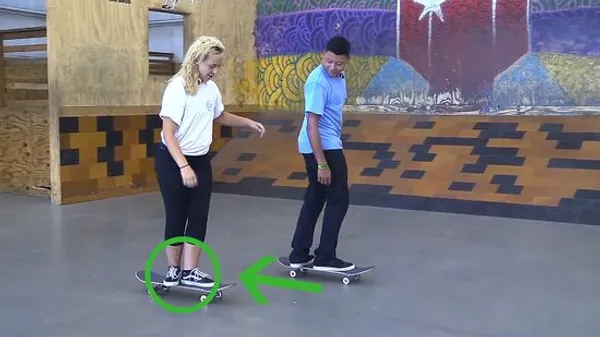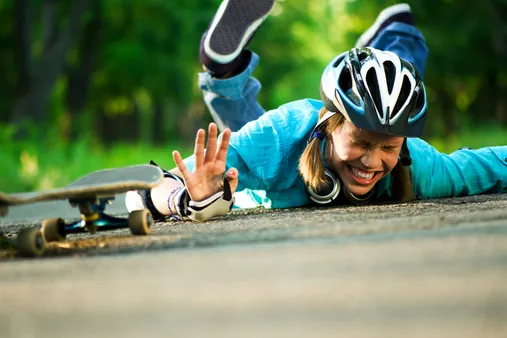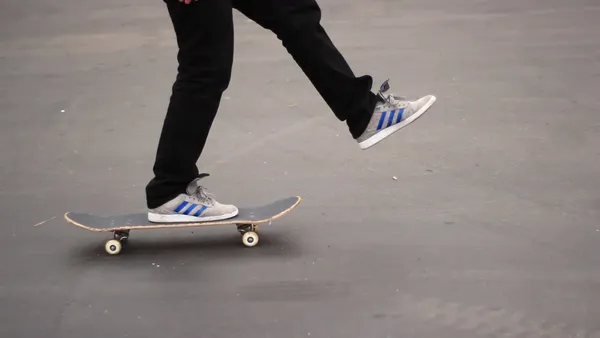Table of Contents
Welcome to Kizworld's skateboarding haven for beginners! Unleash your inner thrill-seeker and embark on an exhilarating journey into the world of skateboarding. Whether you're a complete novice or seeking to refine your skills, our comprehensive guide will equip you with the knowledge and confidence to navigate the skateboarding landscape. From selecting the perfect skateboard and safety gear to mastering the fundamental techniques, we'll guide you every step of the way.
How to Get Started with Skateboarding as a Beginner: A Comprehensive Guide
I. Choosing the Right Skateboard
Choosing the Right Skateboard
Deck Size
Deck size is the most important factor to consider when choosing a skateboard. The length, width, and shape of the deck will all affect how the board performs.
- Length: The length of the deck is measured from the tip of the nose to the tail. A longer deck will be more stable and easier to control, while a shorter deck will be more responsive and easier to flip.
- Width: The width of the deck is measured at the widest point. A wider deck will provide more stability and support, while a narrower deck will be lighter and easier to flip.
- Shape: The shape of the deck can vary depending on the intended use. Street decks are typically shorter and wider with a more rounded shape, while vert decks are longer and narrower with a more pointed shape.
Read more about the benefits of skateboarding
Trucks
Trucks are the metal parts that connect the wheels to the deck. They are responsible for turning the board and providing stability.
- Size: Truck size is measured in millimeters (mm). The width of the truck should be slightly narrower than the width of the deck.
- Angle: The angle of the truck is measured in degrees. A steeper angle will make the board more responsive, while a shallower angle will make the board more stable.
- Bushings: Bushings are the rubber or plastic pieces that sit inside the trucks. They are responsible for absorbing shock and providing rebound.
Learn how to improve balance and coordination with skateboarding
Wheels
Wheels are the parts of the skateboard that come in contact with the ground. They are responsible for providing traction and grip.
- Size: Wheel size is measured in millimeters (mm). The diameter of the wheel will affect the speed and maneuverability of the board.
- Hardness: Wheel hardness is measured in durometers (A). A harder wheel will be more durable and faster, while a softer wheel will provide more grip and shock absorption.
- Shape: The shape of the wheel can vary depending on the intended use. Street wheels are typically smaller and rounder, while vert wheels are larger and squarer.
Discover how to find the best skateboarding spots and parks
Bearings
Bearings are the small metal balls that allow the wheels to spin. They are responsible for reducing friction and providing a smooth ride.
- Type: There are two main types of bearings: sealed and open. Sealed bearings are more durable and require less maintenance, while open bearings are lighter and more responsive.
- Size: Bearing size is measured in millimeters (mm). The most common bearing size is 608.
- Lubrication: Bearings should be lubricated regularly with a light oil or grease.
Learn how to avoid common skateboarding injuries
II. Learning the Basics of Skateboarding
Learning the Basics of Skateboarding
Stance
The first step in learning how to skateboard is to get comfortable with your stance. Stand on the board with your feet shoulder-width apart, with your front foot slightly angled forward. Your knees should be slightly bent and your weight should be evenly distributed between your front and back foot.
To learn more about the stance, check out our article on How to Choose the Right Skateboard for Your Skill Level and Style.
Pushing
Once you're comfortable with your stance, you can start pushing. To push, place your back foot on the tail of the board and use your front foot to push off the ground. As you push, keep your weight centered over the board and your knees slightly bent.
To learn more about pushing, check out our article on The Benefits of Skateboarding for Fitness and Fun.
Stopping
To stop, you can either drag your back foot on the ground or use the brakes on your skateboard. To drag your back foot, simply lift your front foot off the board and drag your back foot behind you. To use the brakes, press down on the brake lever with your back foot.
To learn more about stopping, check out our article on The Best Skateboarding Equipment and Accessories.
Turning
To turn, you can either lean in the direction you want to go or use your front foot to steer. To lean, simply shift your weight in the direction you want to go. To use your front foot to steer, push down on the front of the board in the direction you want to go.
To learn more about turning, check out our article on How to Improve Your Balance, Coordination, and Creativity with Skateboarding.
III. Safety Gear and Protective Equipment
Safety Gear and Protective Equipment
When skateboarding, safety should always come first. Wearing the right protective gear can help prevent serious injuries in case of a fall or accident. Here are some essential safety gear items that every skateboarder should have:
- Helmet: A helmet is the most important piece of safety gear for skateboarding. It protects your head from serious injury in case of a fall.
- Knee Pads: Knee pads protect your knees from scrapes and bruises when you fall.
- Elbow Pads: Elbow pads protect your elbows from scrapes and bruises when you fall.
- Wrist Guards: Wrist guards protect your wrists from sprains and fractures when you fall.
In addition to these essential items, you may also want to consider wearing other protective gear, such as:
- Mouthguard: A mouthguard can protect your teeth and gums from injury in case of a fall.
- Hip Pad: A hip pad can protect your hips from bruises and fractures when you fall.
- Tailbone Pad: A tailbone pad can protect your tailbone from injury in case of a fall.
Wearing the right safety gear can help you stay safe while skateboarding. Make sure to wear all of your safety gear every time you ride.
Here are some tips for choosing the right safety gear:
- Make sure the gear fits properly. Ill-fitting gear can be uncomfortable and may not provide adequate protection.
- Choose gear that is made from high-quality materials. Cheap gear may not be as durable or protective as more expensive gear.
- Replace your gear regularly. Safety gear can wear out over time, so it's important to replace it regularly.
By following these tips, you can choose the right safety gear and stay safe while skateboarding.
Related Posts:
- How to Choose the Right Skateboard for Your Skill Level and Style
- The Benefits of Skateboarding for Fitness and Fun
- The Best Skateboarding Equipment and Accessories
IV. Common Mistakes to Avoid
Common Mistakes to Avoid
Not Wearing Safety Gear
Never step on a skateboard without the appropriate protective gear. You never know when you might take a spill, so ensure you use a helmet, elbow pads, knee pads, and wrist guards.
- Skateboarding can be a fun and healthy activity, but it's important to wear safety gear to protect yourself from injury.
Starting on a Ramp
Don't think you'll shred the half-pipe right away. It takes time to build up to more advanced tricks. Learn the basics in a safer environment before you move on to ramps and other structures.
- Skateboarding can improve your balance, coordination, and creativity.
Not Learning the Basics
Don't skip the basics. You need to master these fundamental skills before you move on to more advanced tricks. This includes learning how to stand properly on the board, how to push off, how to stop, and how to ride while toeing and heeling.
- Skateboarding has a rich history and culture, and it's a great way to meet new people and make friends.
Trying to Do Too Much Too Soon
Try to learn just one new trick at a time. Don't try to become a pro in a day. The more tricks you try to learn, the quicker you'll get frustrated. So try to focus on learning a few beginner tricks first, and then gradually try more tricks.
- Find a safe place to practice skateboarding, such as a park or empty parking lot.
V. Tips for Beginners
Start Slow
No need to rush the process of learning to skateboard. Put in the time, and you'll naturally reach your goals. Make sure each attempt, whether successful or not, is a good opportunity for progress through the basics.
Find a Good Spot to Practice
Find a location that has a smooth ground surface and is free of major obstacles. This will help you maintain good speed and control as you practice your skateboarding tricks.
Take Lessons
If you want to accelerate your progression or simply learn from s who have been skating for years, sign up for some skateboarding lessons. The instructors could easily break down advanced techniques at your level and help you build confidence.
Have Fun
Don't forget that it's skateboarding, and you need to enjoy it! Relax and have fun as you practice. Do not focus on making every session too intense.
VI. Conclusion
As you progress in your skateboarding journey, remember to prioritize safety, practice regularly, and seek guidance from experienced skaters or instructors. With dedication and perseverance, you'll overcome challenges, expand your skills, and unlock the true joy of skateboarding. Embrace the thrill of the ride and let your skateboard take you to new heights of adventure and self-expression.